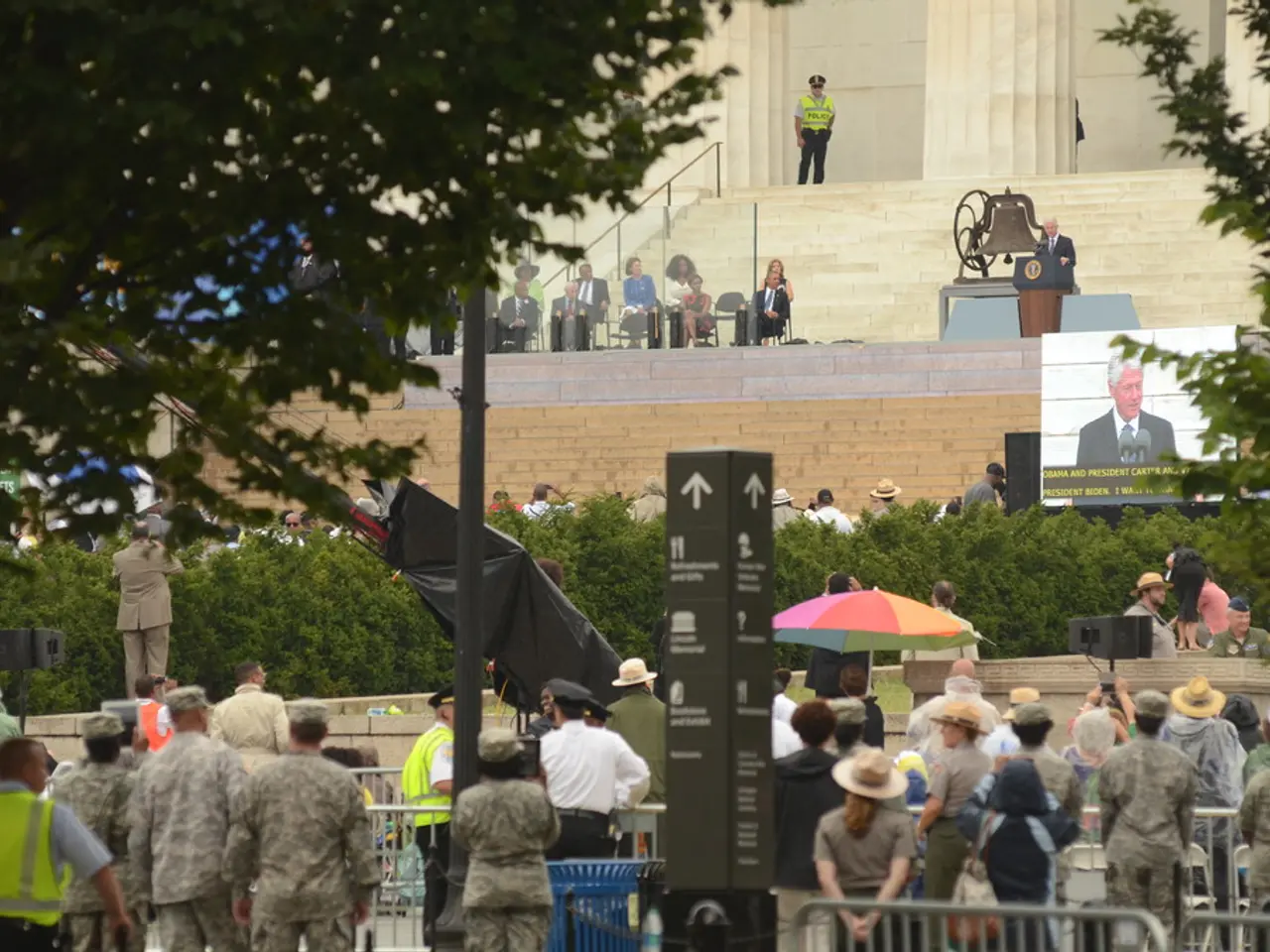Decrease in workforce: Over 7,500 employees specializing in veterans' affairs lose their jobs as part of a downsizing effort by the VA
The Department of Veterans Affairs (VA) is grappling with significant recruitment and retention issues, leading to a shrinking workforce and emerging service bottlenecks in the delivery of healthcare to veterans.
Staffing Levels and Workforce Changes
As of June 30, 2025, the VA has approximately 457,344 employees across all components, with 403,264 in the Veterans Health Administration (VHA) alone. However, compared to the same period last year, hiring announcements, applications, and selections have declined by roughly 30-50%, indicating a shrinking recruitment pipeline.
Recruitment Timing
The average time to hire for critical positions, including clinical roles within VHA, is around 46-47 days, which may reflect ongoing hiring bottlenecks.
Layoffs and Workforce Reductions
The VA has dismissed over 1,000 probationary employees in 2025, particularly affecting clinical and research programs such as oncology and mental health. Broader staffing reductions are anticipated, with plans to reduce the workforce by up to 30,000 employees through attrition and retirements rather than direct layoffs.
Retention Challenges
Union representatives attribute the decline in employee morale and retention, particularly among clinicians and health professionals, to the removal of collective bargaining rights by Executive Order in March 2025. The denial of bargaining rights has undermined protections and incentives, thus negatively impacting retention efforts.
Impact on Services
Union leaders and some veteran advocates report current shortfalls in critical nursing and appointment scheduling staff, raising concerns about delays and diminished quality of veterans’ health care access and benefits processing. Though VA leadership denies immediate detrimental impacts, these staffing challenges pose substantial risks to service levels.
Financial Incentives Debate
There is ongoing political contention about the effectiveness of financial bonuses for VA employees, with Republican lawmakers aiming to reform these incentives. Democrats caution that cutting or reforming these bonuses could further hamper recruitment and retention.
Incentives and Staffing Shortages
The VA's North Battlefield Outpatient Clinic in Chesapeake, Virginia, is struggling to staff up, with the clinic opening in April with about 27% of its staffing goal this spring. Incentives are seen as crucial in attracting and retaining talent, but the VA's sharp rollback of recruitment, retention, and relocation (3R) incentives this fiscal year has exacerbated the situation.
VA employees can receive recruitment and relocation incentives for up to four years, while retention incentives only last for about a year. In fiscal 2024, the VA awarded 14,585 critical skills incentives, but has only granted a single CSI so far this fiscal year.
Future Prospects
The VA is expecting to rehire for the roles lost this fiscal year, with the net loss including about 1,720 registered nurses, nearly 1,150 medical support assistants, over 600 physicians, nearly 200 police officers, nearly 80 psychologists, and nearly 1,100 veteran claim examiners. The VA continues to experience staffing shortages for positions fundamental to the safe and effective delivery of care to veterans.
The VA is on track to shed nearly 30,000 employees through attrition by the end of the fiscal year, with most of these positions being administrative roles. Despite these challenges, the VA remains committed to addressing these issues and maintaining the quality of services for veterans.
[1] "VA Workforce and Staffing Levels." U.S. Department of Veterans Affairs, 2025. [2] "VA Staffing Reductions." U.S. Department of Veterans Affairs, 2025. [3] "Collective Bargaining Rights and Employee Morale." Union Representatives, 2025. [4] "Impact of Staffing Shortages." Union Leaders and Veteran Advocates, 2025. [5] "Political Contention on Employee Incentives." Congressional Debates, 2025.
Fiscal Implications and Recruitment Strategies
As the financial implications of staffing issues become increasingly clear, the question of how to attract and retain a robust workforce is at the forefront. The federal workforce, including the VA, will need creative solutions to enable an effective, reimagined workforce.
Financial Incentives and Workforce Demand
Incentives, both monetary and non-monetary, may play a critical role in meeting hiring needs and supporting the retention of valuable employees. Modifying current strategies to better address the demand for vital staff members and overcoming ongoing recruitment challenges could help bridge the gap in the VA's workforce.




